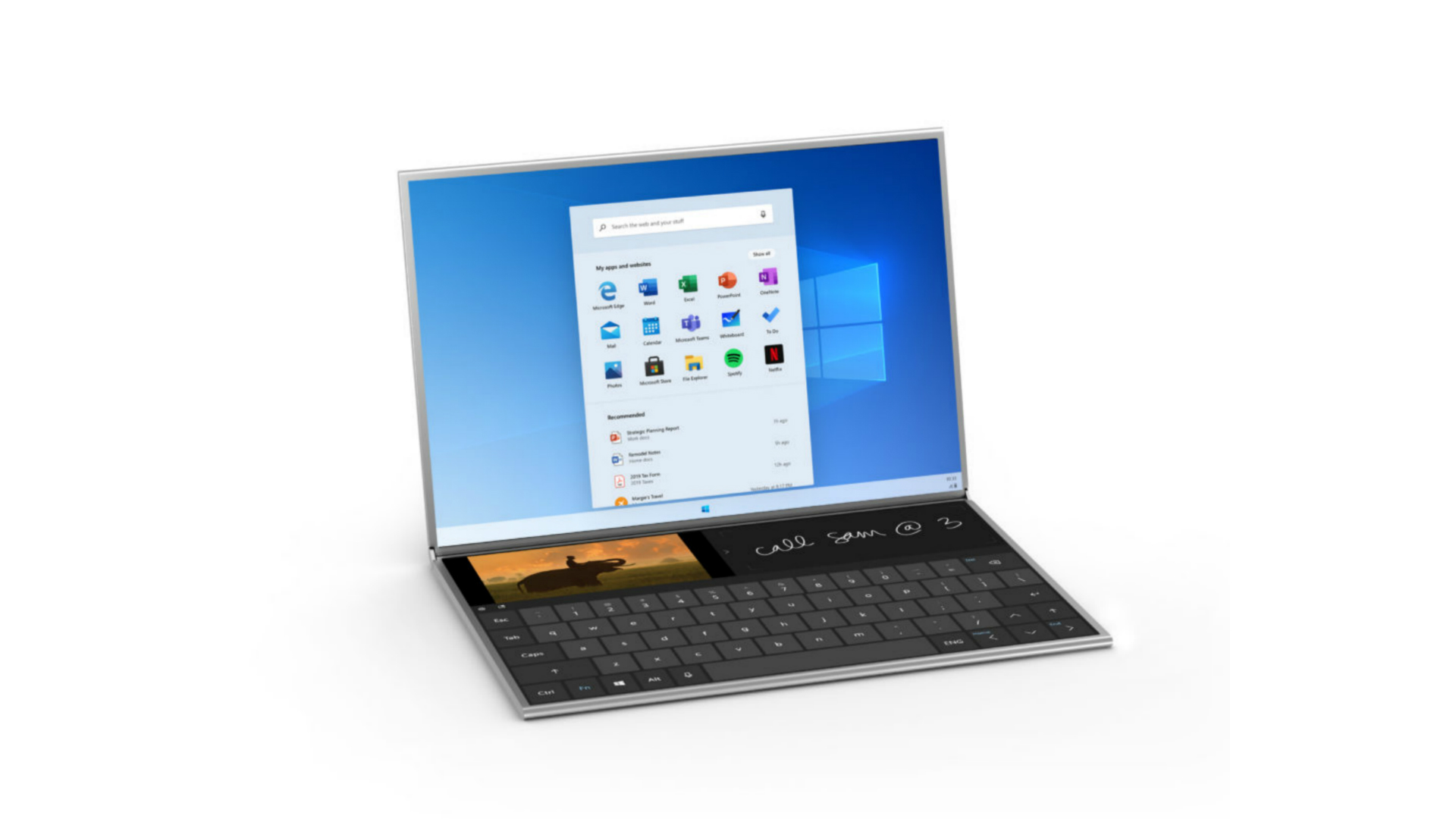Update: May 4, 2020: Don’t look for the Microsoft Surface Neo dual-screen Windows tablet to be released anytime soon. Microsoft’s Chief Product Officer Panos Panay has confirmed in a blog post that the company will now “look for the right moment� to release dual-screen devices, such as the Surface Neo, that would have used the Windows 10X operating system. Panay says Microsoft is making these changes due to the needs of its customers, which he says are now looking to use “the power of the cloud more than ever.�
That means the first devices that use Windows 10X, which was originally announced specifically for the use of dual-screen PCs, will now be single-screen products — including laptops and 2-in-1 notebooks — with more cloud-based features. The Surface Neo, which was to be released in late 2020, no longer has a release date.
Original story: October 2, 2019: Along with today’s surprise reveal of the Android-based Microsoft Surface Duo device, Microsoft announced yet another Surface device that won’t be out until late 2020. It called the Microsoft Surface Neo, and it will be a full-sized tablet with two foldable displays connected by a 360-degree hinge.
The Neo isn’t based on Android like the Duo is. Instead, it will run a modified version of Windows 10, which Microsoft has called Windows 10X.
The Surface lineup has always been marketed as Windows laptop alternatives rather than standalone tablets. The removable keyboard covers allow the tablets to function on their own, but the tablet is rarely pushed as a standalone device.
The Microsoft Surface Neo, on the other hand, looks like it is going after the audience that loves Apple’s iPad and other pure tablet experiences. You will still be able to use the Surface Neo for work, but it’s designed to be more mobile than previous Surface products.
Each of the two displays on the Surface Neo will be sized at 9 inches. When the device is folded out, you will get a screen that’s equivalent to 13.1 inches. However, unlike the Samsung Galaxy Fold and the Huawei Mate X, the Surface Neo won’t have a single flexible display. The front and back of the Surface Duo will be covered in Gorilla Glass, which will go over its metal and polycarbonate frame. Each side of the tablet will be just 5.6mm thick.
Inside, Microsoft says the device will use Intel’s upcoming Lakefield processor, which is engineered to be more like ARM-based system-on-a-chip (SOC) parts.
The Microsoft Surface Neo will come with a Surface Pen and its own keyboard, both of which will magnetically seal to the back of the tablet when not in use. The keyboard, when in use, covers one of the tablet’s two screens so you can use it more like a laptop PC, but with a smaller tablet display. In fact, the keyboard won’t cover up the entire display; the rest of it can be turned into a touchscreen that can be used for features such as app shortcuts, video, emoji, handwriting, and more.
Windows 10X is specifically designed for dual-screen devices such as the Surface Neo. It will allow owners of such products to not only use two apps at once on each screen, but it can also allow for one app to run on both screens at once. Most apps should swap automatically between dual-screen mode as well as landscape and portrait, depending on how you’re holding the Neo.
It’s likely that Windows 10X will power other dual-screen devices in 2020 released by third-parties. Indeed, Lenovo has already announced a protoype laptop PC with a flexible display that could be a candidate for Windows 10X.
There’s still a lot about the Surface Neo we don’t know yet, such as a specific release date, price, battery life, specs such as storage and memory, and much more. It will be interesting to see if this tablet — combined with the dual screen-based Windows 10X — will get iPad die-hards to jump to this new product.
What do you think of the Microsoft Surface Neo?
More posts about Microsoft














